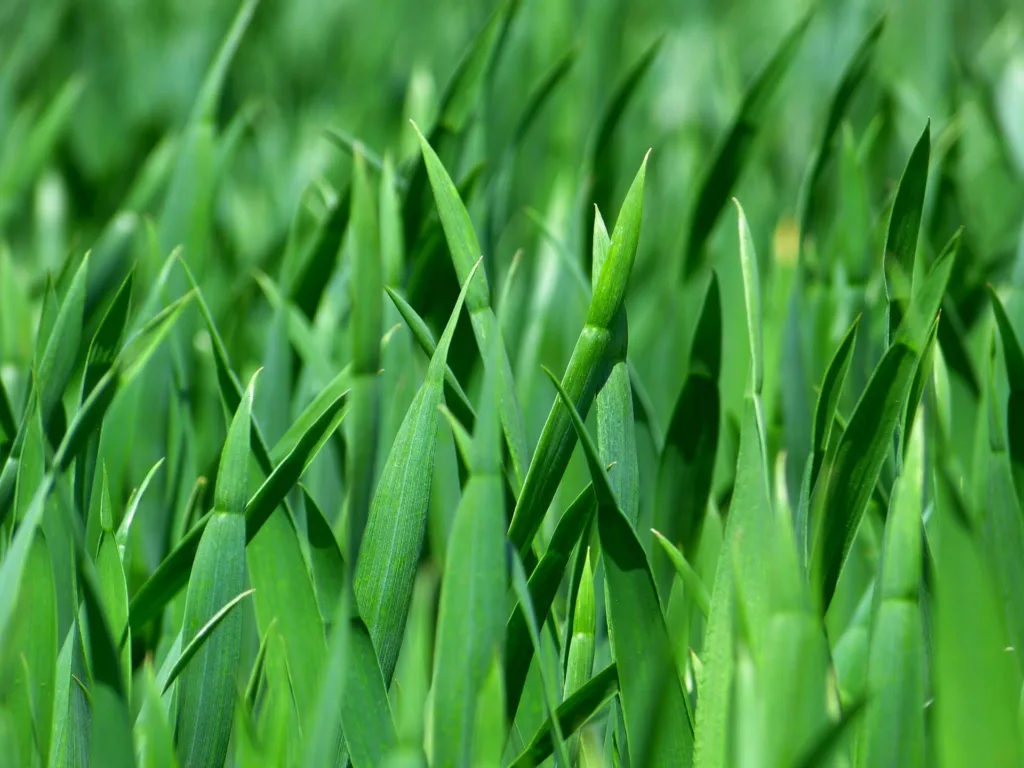If you’re looking for a lawn that’s as easy-going as a lazy Sunday afternoon, fine fescue grasses might just be your perfect match. These cool-season grasses have been quietly revolutionizing lawns across cooler climates, offering a blend of beauty and practicality that’s hard to beat. Let’s dive into the world of fine fescues and discover why they’re becoming the go-to choice for savvy homeowners and landscapers alike.
What Are Fine Fescue Grasses?
Fine fescue grasses are a group of grass species known for their slender blades and adaptability. They’re called “fine” because of their needle-like leaves, which create a soft, carpet-like texture underfoot. These grasses have been around for centuries, originating in Europe and parts of Asia, but they’ve recently gained popularity in North America for their low-maintenance qualities.
There are four main types of fine fescues:
- Chewings fescue (Festuca rubra ssp. commutata)
- Creeping red fescue (Festuca rubra ssp. rubra)
- Hard fescue (Festuca brevipila)
- Sheep fescue (Festuca ovina)
Each type has its own unique characteristics, but they all share the common traits of fine blades and excellent adaptability to challenging conditions.
Why Choose Fine Fescue for Your Lawn?

Fine fescue grasses aren’t just a pretty face in the lawn world; they’re workhorses that can thrive where other grasses struggle. Here’s why you might want to consider them for your yard:
- Low maintenance: If you’re tired of being a slave to your lawn, fine fescues are your ticket to freedom. They require less mowing, fertilizing, and overall care compared to many other grass types.
- Drought tolerance: In a world where water conservation is becoming increasingly important, fine fescues shine. Their deep root systems allow them to withstand dry spells better than many other cool-season grasses.
- Shade tolerance: Got a yard that’s more shadow than sunshine? Fine fescues are among the most shade-tolerant grasses out there, making them perfect for those tricky spots under trees or near buildings.
- Cold hardiness: These tough cookies can handle freezing temperatures like champs, staying green longer into the fall and greening up earlier in the spring.
- Fine texture: The delicate blades of fine fescues create a lush, carpet-like appearance that’s both beautiful and soft underfoot.
The Fine Fescue Family: A Closer Look
Let’s break down the fine fescue family to help you understand which type might be best for your needs:
Chewings Fescue
Named for its tendency to “chew” through thatch, this non-creeping grass forms dense, fine-textured turf. It’s excellent for areas with poor, dry soils and does well in shade.
Best uses: Golf course roughs, home lawns, and erosion control on slopes
Creeping Red Fescue
This variety spreads by underground stems called rhizomes, allowing it to fill in bare spots and create a denser turf over time. It’s particularly good at tolerating salt, making it ideal for coastal areas.
Best uses: Lawns in coastal regions, areas needing quick establishment, and as a companion grass in mixtures
Hard Fescue
True to its name, hard fescue is incredibly tough. It has excellent drought tolerance and can survive on very little fertility, making it perfect for low-maintenance areas.
Best uses: Low-maintenance areas, highway medians, and naturalized landscapes
Sheep Fescue
Often used in ornamental landscapes, sheep fescue has a distinctive blue-green color and forms small clumps. It’s incredibly drought-tolerant and can survive in very poor soils.
Best uses: Ornamental landscapes, meadows, and areas where a more natural look is desired
Growing Conditions for Fine Fescue Success
While fine fescues are adaptable, they do have preferences. Here’s a quick guide to help you create the perfect environment for your fine fescue lawn:
| Factor | Ideal Condition |
|---|---|
| Soil pH | 5.5 – 6.5 |
| Soil type | Well-draining, even sandy or rocky |
| Sun exposure | Partial shade to full sun |
| Climate | Cool-season regions |
| Water needs | Low to moderate |
Remember, while fine fescues can tolerate full sun, they really shine in partly shady areas. If you’re dealing with a lawn that gets dappled sunlight throughout the day, fine fescues might be your new best friend.
Planting and Establishing Fine Fescue Lawns

Ready to start your fine fescue journey? Here’s how to get your lawn off to a great start:
- Timing is everything: Plant in early fall or early spring when temperatures are cooler and rainfall is more frequent.
- Prep the soil:
- Remove any existing vegetation
- Loosen the top 2-3 inches of soil
- Rake smooth and remove any debris
- Seeding:
- Use 4-5 lbs of seed per 1,000 square feet for new lawns
- For overseeding, use 2-3 lbs per 1,000 square feet
- Rake lightly to cover seeds with about 1/4 inch of soil
- Water wisely:
- Keep the soil consistently moist but not waterlogged
- Water lightly and frequently (2-3 times daily) until germination
- Once established, water deeply and less frequently to encourage deep root growth
- Post-planting care:
- Avoid heavy traffic for the first few weeks
- Begin mowing when grass reaches about 3 inches high
- Hold off on fertilizing until the grass is actively growing
Remember, patience is key. Fine fescues may take a bit longer to establish compared to some other grasses, but their long-term benefits are worth the wait.
Maintaining Your Fine Fescue Grass
Once established, fine fescues are relatively low-maintenance, but they do require some care to look their best. Here’s your maintenance cheat sheet:
- Mowing: Keep your fine fescue between 2.5 to 3 inches tall. Never remove more than 1/3 of the blade length in a single mowing.
- Fertilization: Fine fescues need less fertilizer than many other grasses. Apply a slow-release, low-nitrogen fertilizer once in early spring and once in early fall.
- Weed control: The dense growth of fine fescues naturally suppresses many weeds. For persistent weeds, use targeted herbicides sparingly.
- Disease management: Fine fescues are generally disease-resistant, but can be susceptible to red thread in humid conditions. Improve air circulation and avoid overwatering to prevent issues.
Fine Fescue Blends and Mixes
While fine fescues are great on their own, they really shine when used in mixes. Here’s why:
- Increased adaptability: Different species thrive in slightly different conditions, creating a more resilient lawn overall.
- Extended growing season: Some varieties green up earlier or stay green longer, providing better year-round color.
- Improved disease resistance: A diverse lawn is less susceptible to species-specific diseases.
Popular fine fescue blends often include:
- A mix of different fine fescue species (e.g., creeping red and chewings)
- Fine fescues combined with Kentucky bluegrass for improved wear tolerance
- Fine fescues mixed with perennial ryegrass for quicker establishment
Environmental Benefits of Fine Fescue Lawns
Choosing fine fescue grasses isn’t just good for your lawn care routine; it’s great for the environment too. Here’s how:
- Water conservation: Fine fescues require up to 50% less water than traditional cool-season grasses like Kentucky bluegrass.
- Reduced chemical use: Their natural hardiness means less need for pesticides and fertilizers.
- Lower emissions: Less frequent mowing translates to reduced fuel consumption and air pollution.
- Biodiversity support: Fine fescue lawns can provide habitat for beneficial insects and small wildlife, especially when allowed to grow slightly longer.
The Future of Fine Fescue: Research and Development
The world of fine fescues is constantly evolving, with researchers working to develop even more resilient and versatile varieties. Current areas of focus include:
- Enhancing heat tolerance for better performance in warmer regions
- Improving wear resistance for use in higher-traffic areas
- Developing varieties with even lower water and nutrient requirements
As climate change continues to affect our landscapes, the adaptability and low-input nature of fine fescues make them a promising option for sustainable lawn care in the future.
Conclusion
Fine fescue grasses offer a compelling combination of beauty, resilience, and low maintenance that makes them an excellent choice for many lawns. Whether you’re looking to reduce your lawn care workload, create a more sustainable landscape, or simply enjoy a lush, soft carpet of green, fine fescues deserve a closer look. With their adaptability to shade, poor soils, and drought conditions, these unassuming grasses might just be the secret to the lawn of your dreams.
FAQs About Fine Fescue Grasses
Q: How often should I water my fine fescue lawn? A: Once established, fine fescues typically need watering only during prolonged dry periods. Water deeply but infrequently to encourage deep root growth.
Q: Can fine fescue grow in full sun? A: While fine fescues prefer partial shade, many varieties can tolerate full sun, especially in cooler climates. They may require more water in sunny areas.
Q: Is fine fescue good for high-traffic areas? A: Fine fescues are better suited for low to moderate traffic areas. For high-traffic zones, consider mixing with more wear-tolerant grasses or using stepping stones.
Q: How long does it take for fine fescue to germinate? A: Fine fescue seeds typically germinate in 7-14 days under ideal conditions.
Q: Can I overseed fine fescue into an existing lawn? A: Yes, fine fescues can be overseeded into existing lawns. Mow the existing grass short, rake to expose soil, and sow the fine fescue seeds for best results.


